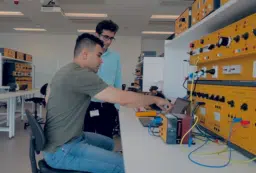Conflict: what tactics should police avoid when attempting to defuse a conflict? This behavioural research observed police on patrol for more than a year and electronically recorded their tactics for analysis.
Police can significantly reduce the chances of conflict – and improve their image – by showing greater empathy when dealing with members of the public and by using strategic questioning to control the tone of the interaction, according to a new study featured at today’s ScienceNOW! forum in Melbourne.
It shows that when dealing with offenders, victims or simply people in the street situations can become quickly inflamed if police are too aggressive, intimidate people by their attitude or use threats and physical behaviour as other than a last resort.
However, people are more likely to stay calm and co-operative if they feel validated and legitimised by how they are treated.
The study examined how hundreds of police-citizen interactions unfolded in Adelaide to identify how and where police can contribute to more harmonious relations with the public through their own behaviour.
Ms Helen Braithwaite, a Psychology PhD student at Flinders University, spent 10 months on patrol with a number of two-officer teams – five months on foot in Hindley Street, one of the city’s nightlife areas, and five in patrol cars in two suburban regions.
Every time officers spoke with a member of the public for any reason she recorded the chain of events using a specially-adapted, hand-held electronic datalogger.
“The results show that where police use threats it is likely that the person will become defensive or abusive and that the police in turn will back this up with physical behaviour,” she said.
“On the other hand, where police show they are supportive or at least trying to understand the situation, and some did this very skilfully, it has a calming influence.
“Some officers also were able to maintain control without the use of coercion by keeping the person talking and in particular by asking questions. Even a threat could be softened when immediately followed by a question.”
The research was completed with full support from the South Australian Police Force and the officers involved and the results form the basis of a new book funded by the NSW Police Department, which will be released shortly.
Conflict Management in Police-Citizen Interactions
examines how conflict management strategies can be absorbed into police routines and will be used in the training of NSW police officers. It is written by Ms Braithwaite and Flinders colleagues Associate Professor Neil Brewer and Mr Peter Strelan.
Ms Braithwaite, who has qualifications in criminology as well as psychology, said that while the nature of contacts had differed between regions (there was more physical contact, particularly with drunks, in Hindley Street than in the suburbs) the sequence of events had shown very similar patterns.
And the same rules of behaviour applied whether dealing with offenders and trouble makers or simply with “the average Joe”.
“Every interaction has the potential for conflict,” she said. “A person whose house has just been robbed, for example, can become quite agitated and emotional if he or she is not happy with the way the police are speaking or acting.”
The study did not record the actual words used during an interaction; Ms Braithwaite logged the nature of each event into one of several categories of behaviour, for example a threat, a question, or verbal abuse. Each behavioural tactic was logged as it happened and for as long as it happened.
The datalogger, which took three months to program, included an inbuilt clock and internal memory, allowing for precise details of the sequence and timing of events to be recorded. More than 60,000 separate entries were made.
By then examining what most commonly occurred after a given event Ms Braithwaite was able to examine the usual consequences of police behaviour.
A second observer from the National Police Research Unit also coded 10% of the interactions to ensure she agreed with Ms Braithwaite’s interpretation of the situation.





 Fresh Science is on hold for 2022. We will be back in 2023.
Fresh Science is on hold for 2022. We will be back in 2023.